Serving 495 students in grades 3-5, Brocks Gap Intermediate School ranks in the top 5% of all schools in Alabama for overall test scores (math proficiency is top 5%, and reading proficiency is top 5%).
The percentage of students achieving proficiency in math is 72% (which is higher than the Alabama state average of 29%). The percentage of students achieving proficiency in reading/language arts is 77% (which is higher than the Alabama state average of 47%).
The student:teacher ratio of 15:1 is lower than the Alabama state level of 17:1.
Minority enrollment is 46% of the student body (majority Black), which is lower than the Alabama state average of 49% (majority Black).
Quick Stats (2025)
- Grades: 3-5
- Enrollment: 495 students
- Student:Teacher Ratio: 15:1
- Minority Enrollment: 46%
- Overall Testing Rank: Top 5% in AL
- Math Proficiency: 72% (Top 5%)
- Reading Proficiency: 77% (Top 5%)
- Science Proficiency: 65-69% (Top 10%)
- Source: National Center for Education Statistics (NCES), AL Dept. of Education
Top Rankings
Brocks Gap Intermediate School ranks among the top 20% of public schools in Alabama for:
Category
Attribute
Overall Rank
Math Proficiency
Reading/Language Arts Proficiency
Science Proficiency
Diversity
Student Attention
School Overview
Brocks Gap Intermediate School's student population of 495 students has grown by 20% over five school years.
The teacher population of 32 teachers has grown by 14% over five school years.
Grades Offered
Grades 3-5
Total Students
495 students
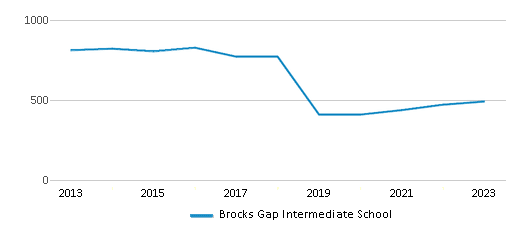
Gender %

Total Classroom Teachers
32 teachers
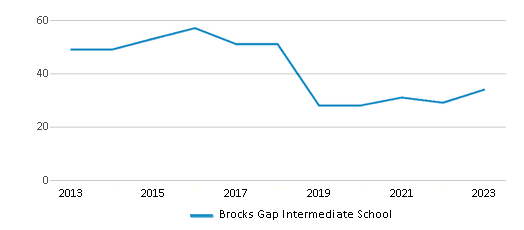
Students by Grade
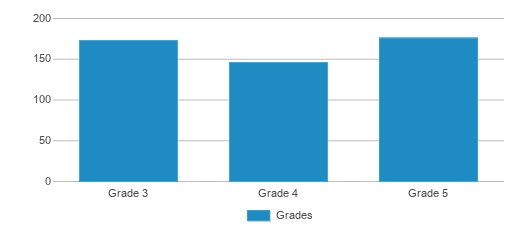
School Calendar
School Rankings
Brocks Gap Intermediate School ranks within the top 5% of all 1,285 schools in Alabama (based off of combined math and reading proficiency testing data).
The diversity score of Brocks Gap Intermediate School is 0.64, which is more than the diversity score at state average of 0.63. The school's diversity has stayed relatively flat over five school years.
Overall Testing Rank
#33 out of 1285 schools
(Top 5%)
(Top 5%)
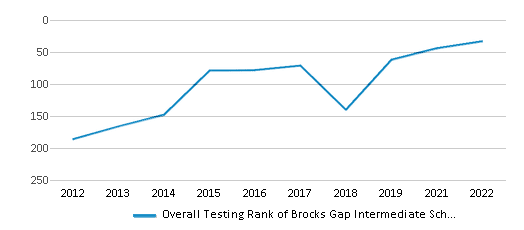
Math Test Scores (% Proficient)
72%
29%
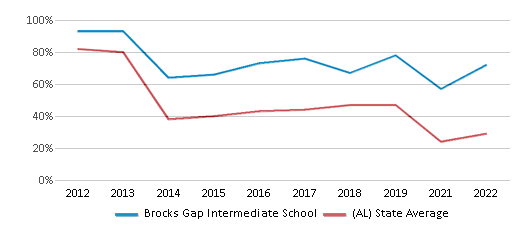
Reading/Language Arts Test Scores (% Proficient)
77%
47%

Science Test Scores (% Proficient)
65-69%
38%
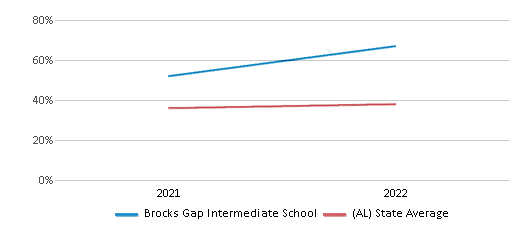
Student : Teacher Ratio
15:1
17:1
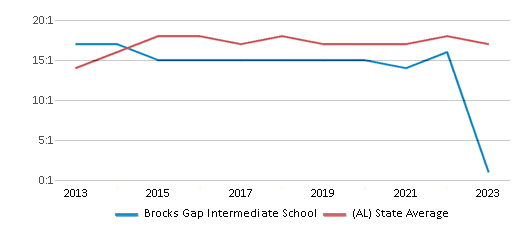
American Indian
n/a
1%
Asian
10%
1%

Hispanic
7%
11%
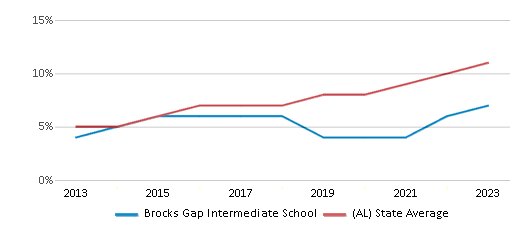
Black
23%
32%
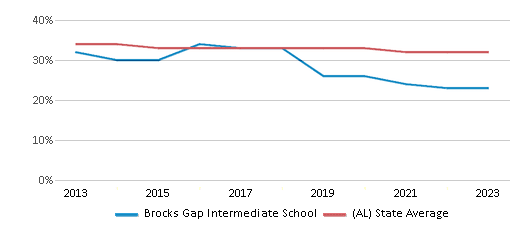
White
54%
51%
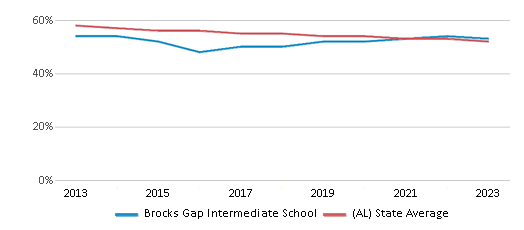
Hawaiian
n/a
n/a
Two or more races
6%
4%
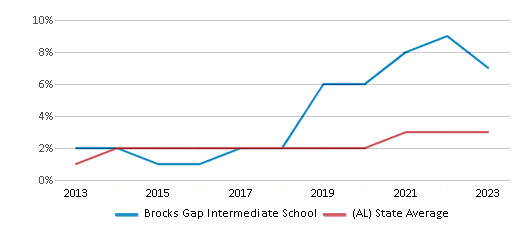
All Ethnic Groups
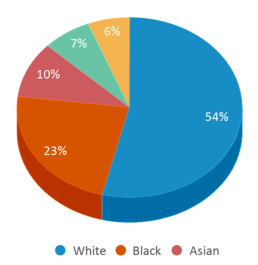
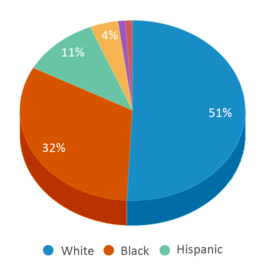
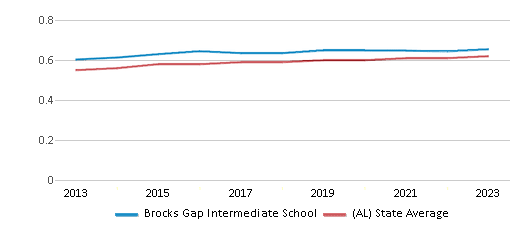
Participates in the National School Lunch Program (NSLP)
Yes
Eligible for Free Lunch
19%
56%
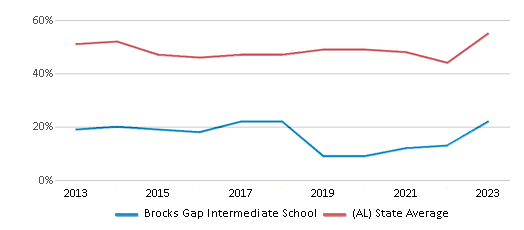
Eligible for Reduced Lunch
3%
5%
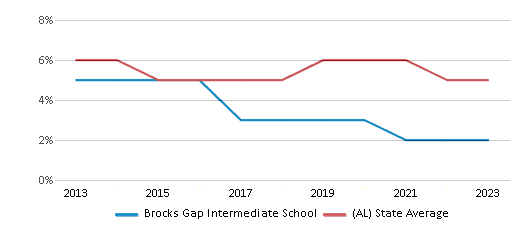
School Statewide Testing
School District Name
Source: National Center for Education Statistics (NCES), AL Dept. of Education
School Notes
- For children living in the Central Neighborhood of Cleveland, we offer our Stepstone Academy charter school to give them the best education. What makes our school better for your child:
- Our teachers are great at what they do and care about your child
- We focus on all subjects, with extra attention to math and reading
- We help build your child’s character
- We combine regular teaching with computer technology
- We have two teachers in each classroom to give students the attention they deserve
- After-school and summer programs
- Before and after-school care available
- Support for the whole family, including help with behavior, parenting and job preparation Longer school days for more learning: 8:00 a.m. to 3:50 p.m.
- Free breakfast and lunch
- Free to attend
- Dress code: uniforms
Profile last updated: 02/09/2025
Frequently Asked Questions
What is Brocks Gap Intermediate School's ranking?
Brocks Gap Intermediate School is ranked #33 out of 1,285 schools, which ranks it among the top 5% of public schools in Alabama.
What schools are Brocks Gap Intermediate School often compared to?
Brocks Gap Intermediate Schoolis often viewed alongside schools like Robert F Bumpus Middle School, South Shades Crest Elementary School by visitors of our site.
What percent of students have achieved state testing proficiency in math and reading?
72% of students have achieved math proficiency (compared to the 29% AL state average), while 77% of students have achieved reading proficiency (compared to the 47% AL state average).
How many students attend Brocks Gap Intermediate School?
495 students attend Brocks Gap Intermediate School.
What is the racial composition of the student body?
54% of Brocks Gap Intermediate School students are White, 23% of students are Black, 10% of students are Asian, 7% of students are Hispanic, and 6% of students are Two or more races.
What is the student:teacher ratio of Brocks Gap Intermediate School?
Brocks Gap Intermediate School has a student ration of 15:1, which is lower than the Alabama state average of 17:1.
What grades does Brocks Gap Intermediate School offer ?
Brocks Gap Intermediate School offers enrollment in grades 3-5
What school district is Brocks Gap Intermediate School part of?
Brocks Gap Intermediate School is part of Hoover City School District.
School Reviews
Review Brocks Gap Intermediate School. Reviews should be a few sentences in length. Please include any comments on:
- Quality of academic programs, teachers, and facilities
- Availability of music, art, sports and other extracurricular activities
Recent Articles

What Is A Charter School?
Explore the world of charter schools in this comprehensive guide. Learn about their history, how they operate, and the pros and cons of this educational innovation. Discover key facts about charter schools, including admission policies, demographics, and funding, as well as what to look for when considering a charter school for your child.

10 Reasons Why High School Sports Benefit Students
Discover the 10 compelling reasons why high school sports are beneficial for students. This comprehensive article explores how athletics enhance academic performance, foster personal growth, and develop crucial life skills. From improved fitness and time management to leadership development and community representation, learn why participating in high school sports can be a game-changer for students' overall success and well-being.

February 05, 2025
Understanding the U.S. Department of Education: Structure, Impact, and EvolutionWe explore how the Department of Education shapes American education, from its cabinet-level leadership to its impact on millions of students, written for general audiences seeking clarity on this vital institution.





